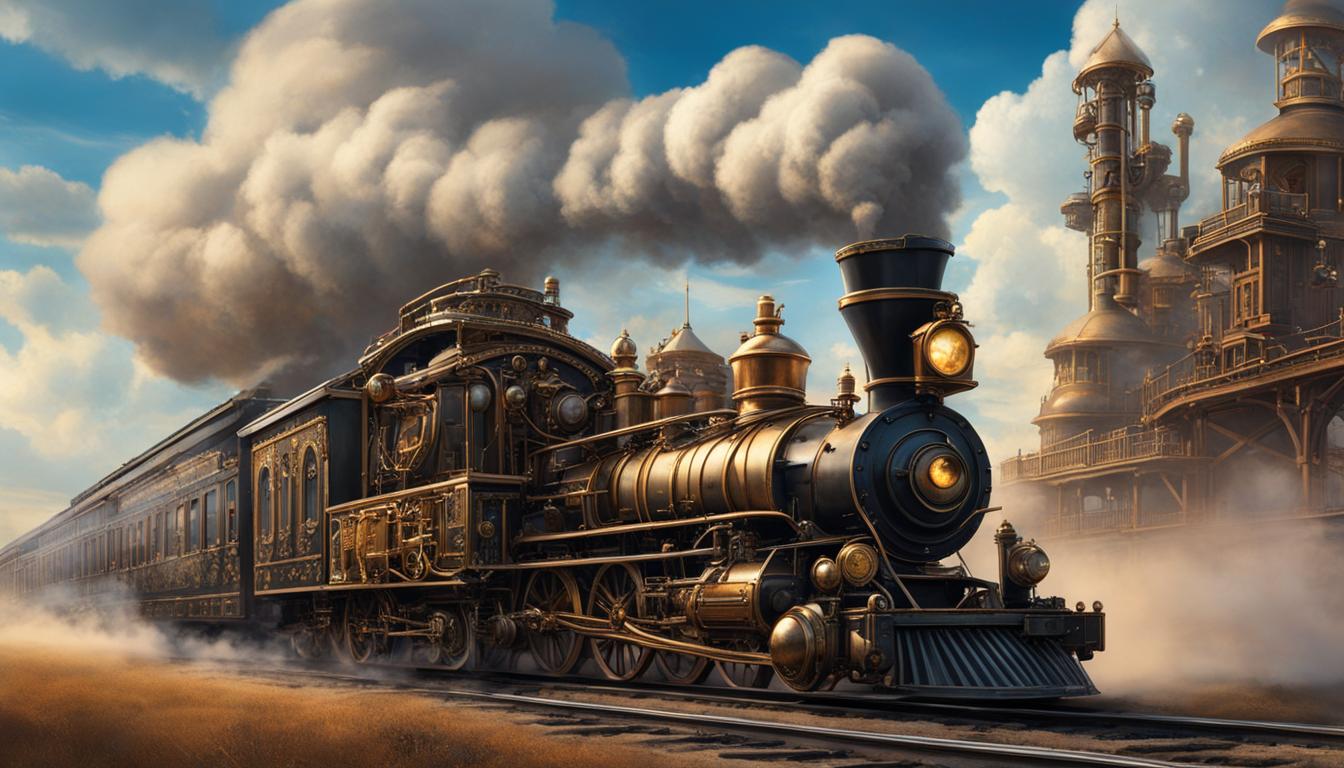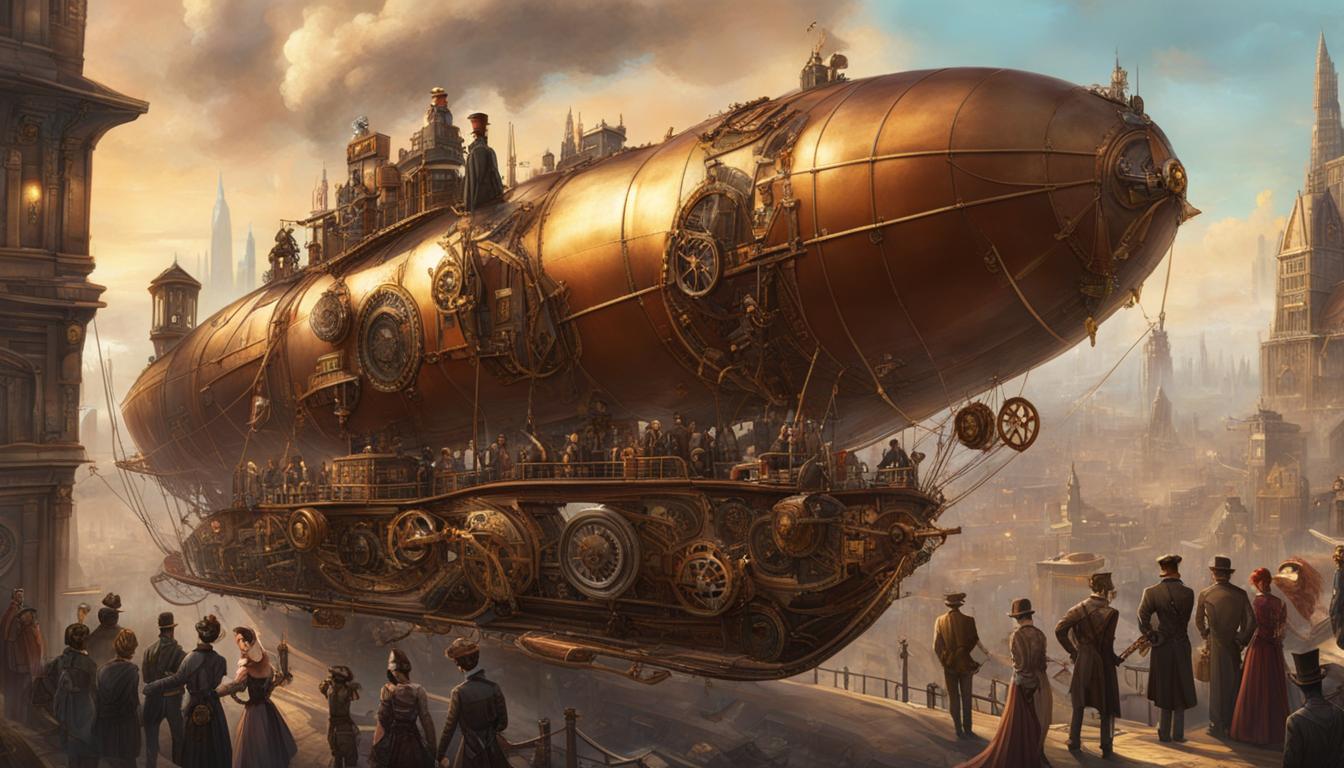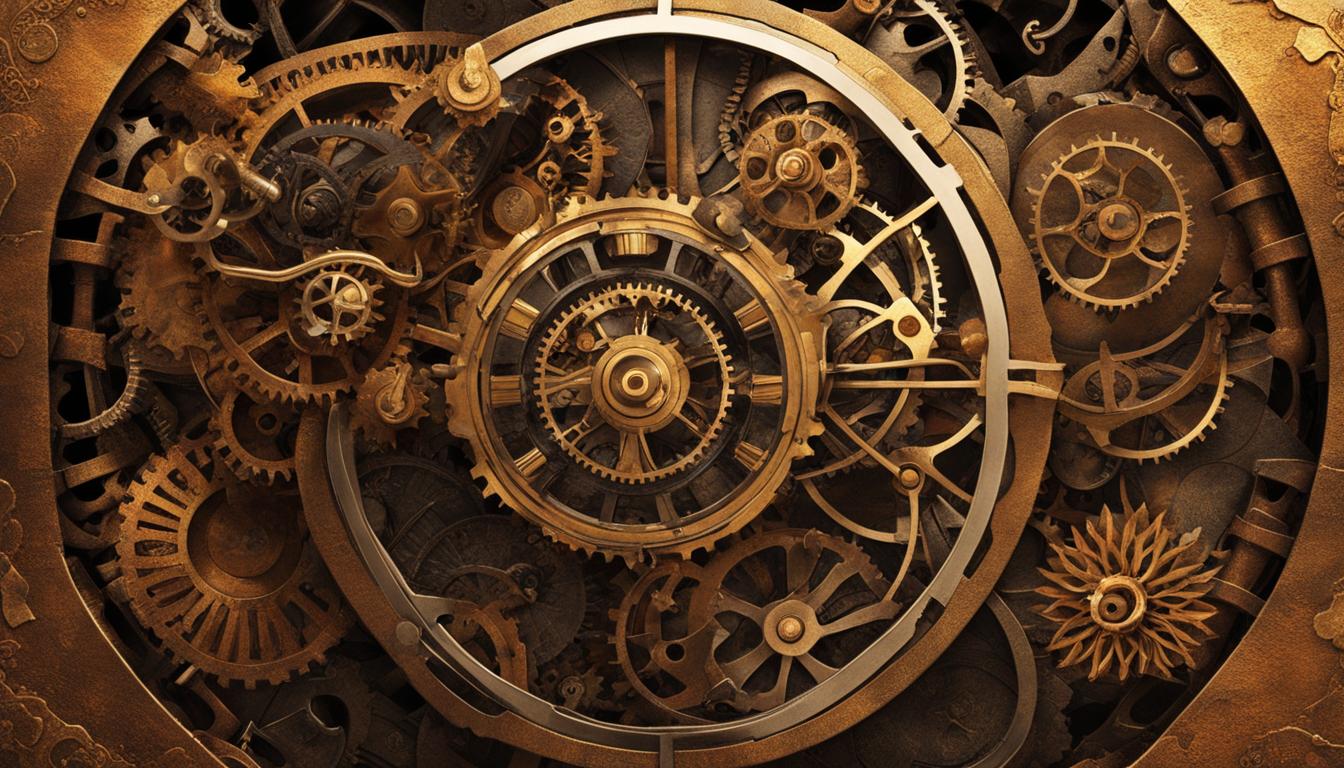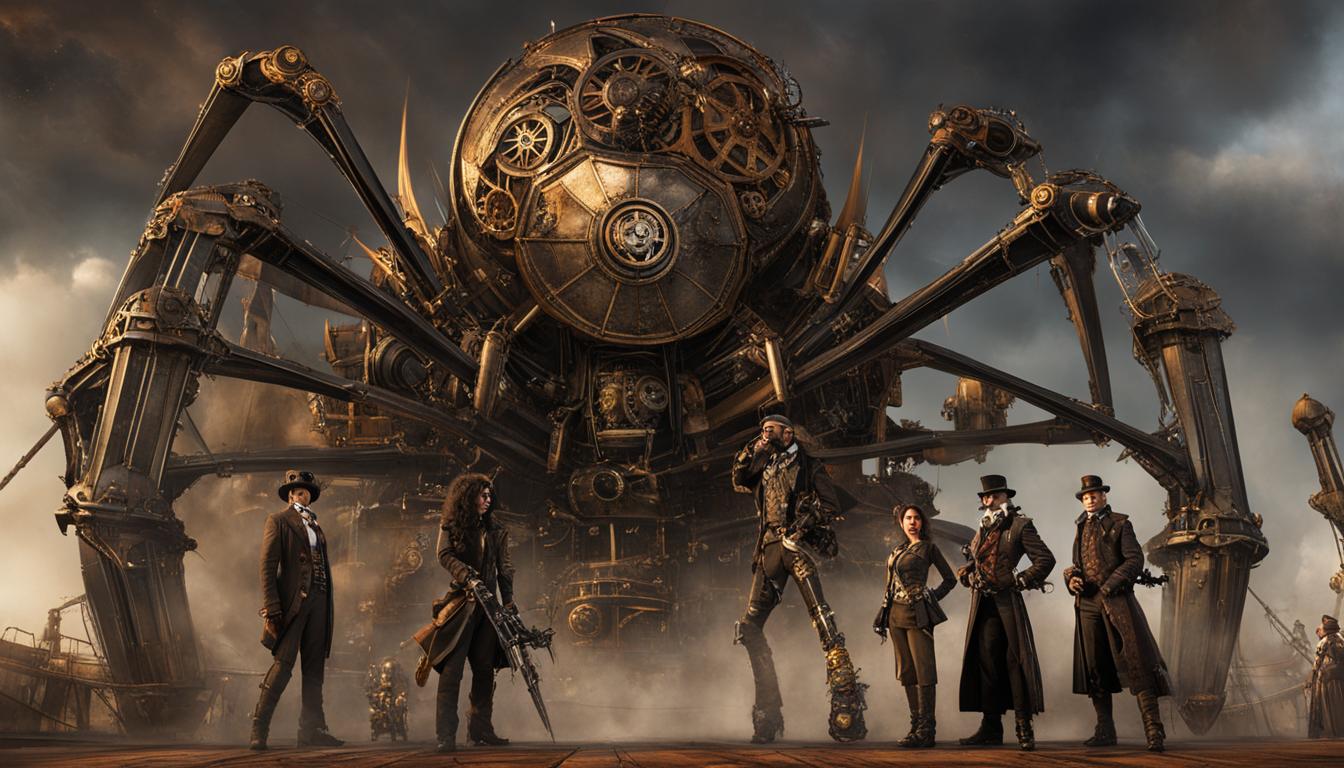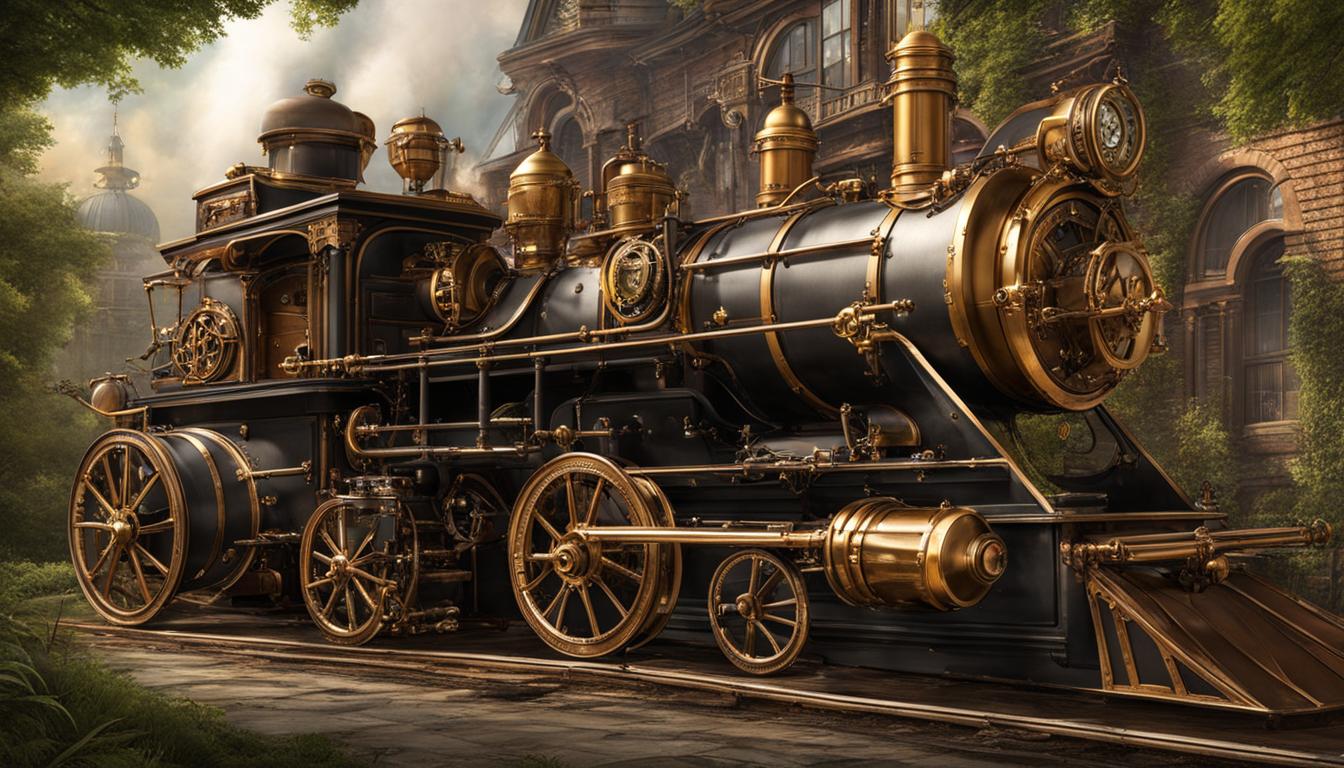Step into a world where the past meets the future, where Victorian elegance collides with cutting-edge technology. Welcome to the realm of steampunk, a genre that reimagines the 19th century in a truly unique and captivating way. In steampunk tales, history is not confined to the pages of dusty textbooks but brought to life through a blend of imagination, aesthetics, and adventure.
Imagine a world where telegraphs hum, airships soar through the skies, and steam-powered machines dominate the landscape. Steampunk takes the technological marvels of the 19th century and elevates them to new heights, merging them with futuristic concepts and fantastical inventions. It’s a world where gears turn, cogs spin, and imagination knows no bounds.
Steampunk not only captures the visual allure of the Victorian era but delves deep into the heart of 19th-century society. Through its tales, it invites readers to explore the social intricacies, class dynamics, and political landscapes of the time. Steampunk offers a fresh lens through which to view the past, challenging traditional narratives and sparking the imagination.
Key Takeaways:
- Steampunk is a genre that reimagines the 19th century with a blend of historical aesthetics and futuristic technology.
- It incorporates the latest technology of the time, such as telegraphs and steam-powered machinery, into its imaginative worlds.
- Steampunk delves into the social, cultural, and political aspects of 19th-century society, providing a fresh perspective on the era.
- Through its unique blend of history and fantasy, steampunk invites readers to explore the past in exciting and thought-provoking ways.
- Experience the allure of 19th-century society through the captivating lens of steampunk.
The Aesthetics of Steampunk and the 19th Century
Steampunk art and literature transport readers to a world where the aesthetics of the 19th century collide with futuristic elements. Focusing on reimagining historical aesthetics, steampunk showcases elaborate Victorian fashion, architecture, and decorative elements that captivate the imagination. Drawing inspiration from the events of the 19th century, artists and authors infuse their creations with a unique blend of history and innovation, creating visually stunning narratives.
One of the defining characteristics of steampunk is its incorporation of 19th-century technology, skillfully blending the past with future possibilities. Gears, cogs, and steam-powered machinery are prominent features, symbolizing the industrial advancements of the era. Steampunk visualizes 19th-century culture through this fusion of historical aesthetics and fictional technology, offering a fresh perspective on the society and technological advancements of the time.
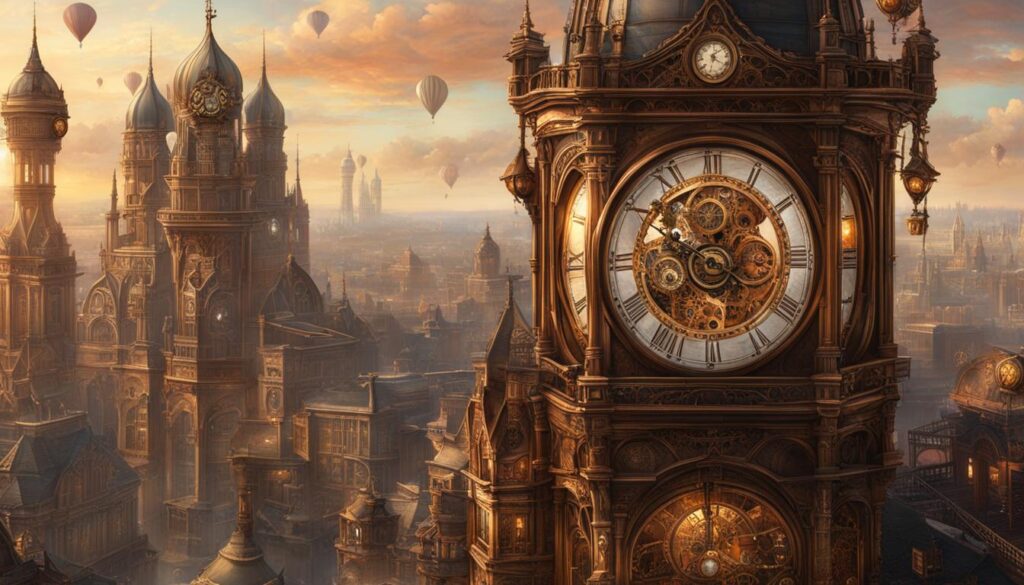
Table: Comparing Steampunk Settings and Technology
| Setting | Description |
|---|---|
| Victorian London | A bustling metropolis with gaslit streets, towering buildings, and intricate architecture. It serves as the quintessential backdrop for steampunk tales, showcasing the societal norms and technological advancements of the era. |
| Alternate Real-World Locations | Steampunk authors often reimagine real-world cities and countries, adding a steampunk twist to their histories and cultures. This allows for creative storytelling while still retaining a sense of familiarity for readers. |
| Steam-Powered Airships | Dirigibles or airships are a common sight in steampunk literature, serving as both transportation and symbols of technological prowess. These majestic vessels dominate the skies, showcasing the fusion of 19th-century aesthetics and futuristic concepts. |
| Intricate Clockwork Mechanisms | Steampunk technology often incorporates elaborate clockwork mechanisms in its inventions, creating a visual spectacle of gears, cogs, and intricate movements. These mechanisms power everything from automatons to advanced contraptions. |
Conclusion
Steampunk offers a captivating view of the 19th century, transporting us to a Victorian era reimagined through a fusion of historical aesthetics and futuristic concepts. Through its unique lens, steampunk challenges traditional narratives and invites us to explore this fascinating period in new and exciting ways.
By blending historical accuracy with imaginative storytelling, steampunk provides a platform for artists, authors, and creators to delve into the society, culture, and technology of the 19th century. From intricate Victorian fashion to steam-powered machinery, the aesthetics of the era are vividly brought to life in steampunk art and literature.
But steampunk’s view of the 19th century goes beyond visuals. It also incorporates alternative versions of historical events, offering a fresh perspective on politics and power dynamics during the Victorian era. This genre allows us to reimagine the roles of political figures and explore the outcomes of significant moments in history.
Steampunk settings, often inspired by real-world locations, form the backdrop for these narratives. Whether it’s Victorian London or alternate versions of familiar places, these settings transport us to immersive worlds where fantastical technology and inventions take center stage. Airships, steam-powered machinery, and other imaginative creations blend seamlessly with historical settings, creating a unique and mesmerizing experience.
In conclusion, steampunk’s reinterpretation of the 19th century provides a fresh and captivating perspective on the Victorian era. Through a fusion of historical aesthetics, alternative politics, and imaginative technology, steampunk challenges our understanding of this fascinating period and invites us to embark on thrilling adventures through its reimagined worlds.
FAQ
What is steampunk?
Steampunk is a genre that reimagines the 19th century through a blend of Victorian aesthetics and futuristic concepts. It incorporates historical events, technology, and imaginative storytelling to create unique worlds and narratives.
How does steampunk depict the aesthetics of the 19th century?
Steampunk art and literature often showcase elaborate Victorian fashion, architecture, and decorative elements. It draws inspiration from historical events and reimagines them in a steampunk context, incorporating gears, cogs, and steam-powered machinery into the visual and technological elements.
Does steampunk include political elements from the 19th century?
Yes, steampunk often explores alternative versions of historical events and reimagines the roles of political figures. It offers a fresh perspective on politics and power dynamics during the 19th century, with characters inspired by real historical figures making appearances in steampunk literature.
Where do steampunk stories usually take place?
Steampunk literature often takes place in settings inspired by the 19th century, such as Victorian London or alternate versions of real-world locations. These settings provide a backdrop for the steampunk technology and inventions that play central roles in the stories.
How does steampunk blend technology and aesthetics?
Steampunk technology combines futuristic concepts with 19th-century aesthetics. It incorporates steam-powered machinery, airships, and other imaginative inventions to create fantastical technology that is visually influenced by the 19th century.

